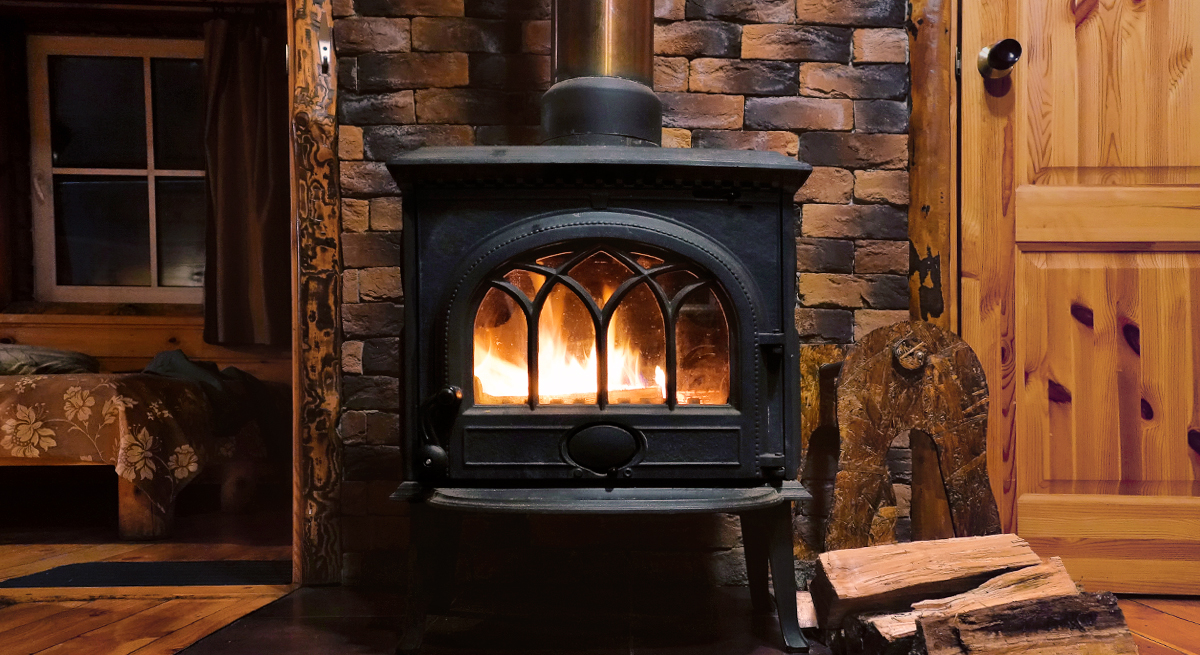Winter Heating Preparation Tips
October 16, 2022
Clean Up Your Heat Source
Anyone who lives in the Northwest understands how important heat is in the winter. Whether you keep your family warm with a fireplace insert, wood or pellet stove, or a clean-burning gas fireplace, there are a few things you need to do in the coming weeks to prepare for Mother Nature’s oncoming fury.
Check Your Chimney
This is by far one of the most important steps you can take with any heat source. That's because the moisture in wood can turn into creosote.
The EPA (Environmental Protection Agency) agrees, stating that clean chimneys help fireplaces and stoves run more efficiently. The government entity also found that newer stoves created far less creosote, were 50% more efficient than models manufactured before 1990, and use 1/3 less wood for the same amount of heat.
Sure, you can clean your chimney yourself, but if you want to stay clean and get it done by a pro, check with the Chimney Safety Institute of America at www.csia.org. There you can find a certified sweep in your area who will check your setup for cracks, leaks, warping, in the baffle (the metal plate that sits over the firebox, blocking off the chimney to force hot gas to remain in the stove), creosote buildup, and critters living in the chimney.
Wood Fireplaces and Inserts
Most wood fireplace enthusiasts will tell you they enjoy the ambiance of a crackling fire. But these things can create some heat too. Before the season starts, you’ll want to do a few chores.
- Clean out the firebox with a vacuum
- Clean out any soot buildup on the walls of your fireplace or the opening into the chimney.
Wood Stoves
A good wood-burning stove is hard to beat. With some quick, annual maintenance, you can maintain or even improve your stove’s efficiency this winter — you might even burn less wood.
- Check your door gasket. The seal should be tight all the way around. If it’s loose, you’ll get smoke in your home and lose heat. To test this, place a dollar bill between the two gaskets and close the door. If you can pull the dollar out without ripping it, you need to replace the gasket.
- Check your stovepipe. Pay close attention to any joints as well as connections to the stove and chimney. Look for cracks and corrosion. If you find any, replace the pipe.
- Inspect your stove. Look for cracks in the bricks, in the metal, and anywhere else.
Pellet Stoves
Before you can let your pellet stove do all the work, give it a once over and a good cleaning to ensure it keeps you and your family warm this winter.
- Clean the exhaust piping and venting.
- Remove the combustion and distribution fans, then vacuum out all the ash and soot.
- Clean behind your inner firebox panels, top heat exchange panels, firewall panels, and any ash traps.
- Double-check the gasket on your firebox door. Use the same dollar bill trick as explained for the wood stove. Again, if you can pull the dollar out easily, you may need to replace the gasket.
- Clean the firepot and the hopper carefully, removing any ash, bits of pellet, or pellet dust.
Gas Fireplaces
There is nothing easier than a gas burning fireplace or insert. There’s no ash to clean up because it burns natural gas or liquid propane. But there are a few things you should do to prepare your fireplace for the season.
- Clean the glass inside and out. You may want to read your owners manual for this one. Be sure to use a soft cloth and approved cleaner. If you scratch the glass, the high heat can cause it to shatter.
- Clean the inside of the fireplace with a vacuum.
- Do a full inspection of your fireplace. If you find any cracks, rust or other damage, replace those parts.
Coastal Knows Stoves
Stop by your nearby Coastal for a warm and friendly reception. The folks in our hearth and home departments can help you order parts, stock up on pellets, and show you the latest and greatest in heating appliances.
Quick Facts
Efficiently running stoves can decrease harmful particles in your home by up to 70%.
Burn dry wood and pellets to help avoid creosote buildup.
When using a wood burning stove or fireplace, ensure logs are less than 8-inches long to avoid damaging your stove.
Wood burning and pellet stoves can suck moisture out of your home. Place a teakettle on top of your stove to add moisture, and some country flair, back into your house.
